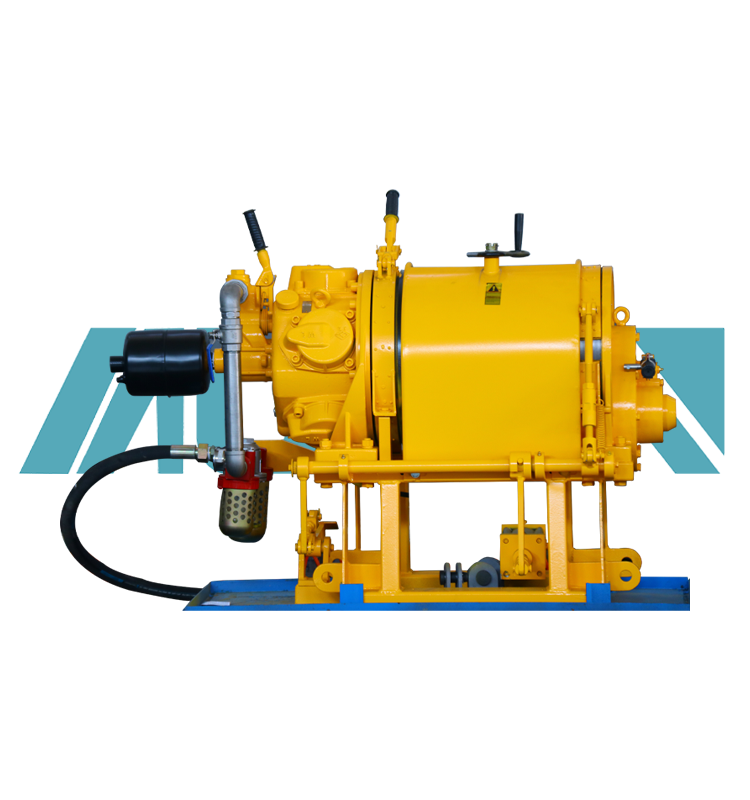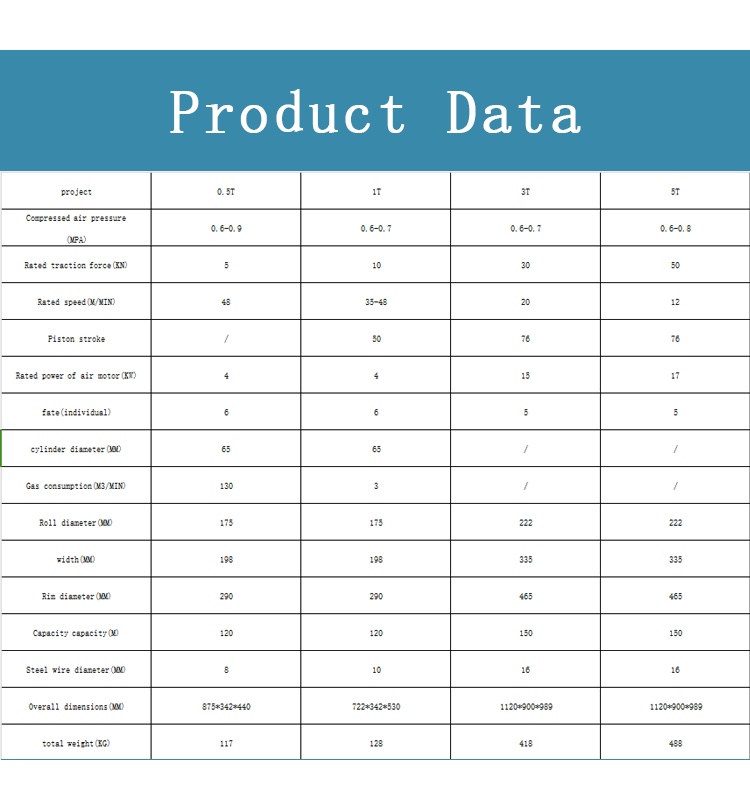 中文版
中文版



Welcome to contact us by phone:0086-0312-7969888
Pneumatic winches are mechanical devices that utilize compressed air as a power source to lift, pull, and position heavy loads. These winches are widely used in various industrial applications where the advantages of pneumatic systems, such as safety, simplicity, and adaptability to hazardous environments, are essential. Pneumatic winches offer a reliable and efficient solution for tasks where electric power may be impractical or pose safety concerns. Here's an introduction to pneumatic winches:
Key Components of Pneumatic Winches:
Air Motor:
The air motor is a critical component of pneumatic winches. It converts compressed air into mechanical energy to drive the winch's drum or gear mechanism for lifting or pulling operations.
Drum or Gear Mechanism:
The drum or gear mechanism is responsible for winding and unwinding the cable or rope. It determines the winch's lifting capacity and the length of cable it can handle.
Control Valve:
Pneumatic winches are equipped with a control valve that allows operators to regulate the airflow. This valve provides control over the speed and direction of the winch, allowing for precise and efficient operation.
Air Inlet:
The air inlet is the point through which compressed air is supplied to the winch. It connects to an external air compressor, which pressurizes the air and delivers it to the winch for power generation.
Braking System:
Pneumatic winches incorporate braking systems to control and secure the load during lifting or lowering operations. This ensures safety and prevents uncontrolled movements.
Housing and Frame:
The housing and frame provide structural support and protection for internal components. They are designed to withstand the rigors of various working environments.
Advantages of Pneumatic Winches:
Safety in Hazardous Environments:
Pneumatic winches are particularly suitable for use in environments where the presence of explosive or flammable materials poses a risk. Since they do not rely on electricity, there is a reduced risk of electrical sparks.
Durability and Robustness:
Pneumatic winches are known for their durability and robust construction. They can withstand challenging working conditions, making them suitable for heavy-duty applications.
Variable Speed Control:
The airflow control valve allows for precise speed control, enabling operators to handle loads with greater accuracy.
Versatility:
Pneumatic winches are versatile and can be used in various industries, including marine, construction, mining, and more. Their adaptability to different environments and tasks makes them valuable tools in many applications.
Ease of Maintenance:
Pneumatic winches often have simpler designs compared to their electric counterparts, leading to easier maintenance and reduced downtime.
Portability:
Pneumatic winches are generally more portable than electric winches, as they do not require a power source other than compressed air. This portability is advantageous in applications where mobility is essential.
In summary, pneumatic winches offer a reliable and efficient solution for lifting and pulling operations in environments where electrical power may be impractical or unsafe. Their versatility, safety features, and durability make them well-suited for a range of industrial applications.

X